On November 17, 1869, eight years after work began, the Suez Canal was officially opened. That great engineering work that linked the Mediterranean with the Red Sea, greatly facilitating communication between Europe, the eastern coast of Africa and Asia, had an obvious geostrategic importance that had existed since ancient times, hence there was a previous attempt at the end of the Egyptian Ancient Kingdom, later continued by different rulers and civilizations. It is what we know today as the Channel of the Pharaohs.
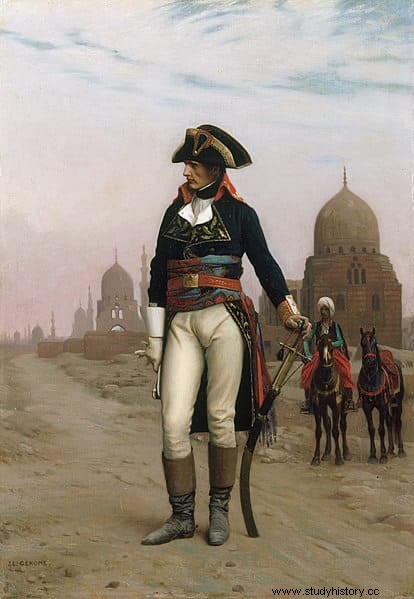
Napoleon found it in 1799, during that famous expedition to Egypt that he personally led and that was to have so much significance for the birth of Egyptology. In fact, he too realized the possibilities of the idea and began excavation work for a canal that would allow his fleet to change seas without having to circumnavigate the entire African continent and thus compromise British India. Curiously, the plan went awry for the same reason it had for Ramses II three thousand years earlier.
Let's go back in time, but not to the New Kingdom - the period in which the Ramesids lived - but rather earlier, to the Old Kingdom. It was then, probably, when the pharaohs began to consider the possibility of linking the Mediterranean with the Red Sea. The objective? Make it easier for the ships coming from Byblos with their precious cargoes of wood to go out to the Gulf of Suez, given that the Nile runs parallel to it with no way out; Until then, it was necessary that for this transfer the boats be taken ashore, disassembled and transported to the Bitter Lakes, from where they were reassembled and could now sail to the open sea.
The Great Bitter Lake and the Small Bitter Lake are two pockets of salt water whose surface reaches about 250 square kilometers and which at that time had access to the Red Sea, although later it was lost and alternatives had to be used. One was the Wadi Hammamat, a boulevard nestled in a rich mining region (where basalt, quartz, schist and that characteristic green rock called bejen were extracted) that led from the city of Quift on the Theban Nile to Qusayr on the Red Sea coast.
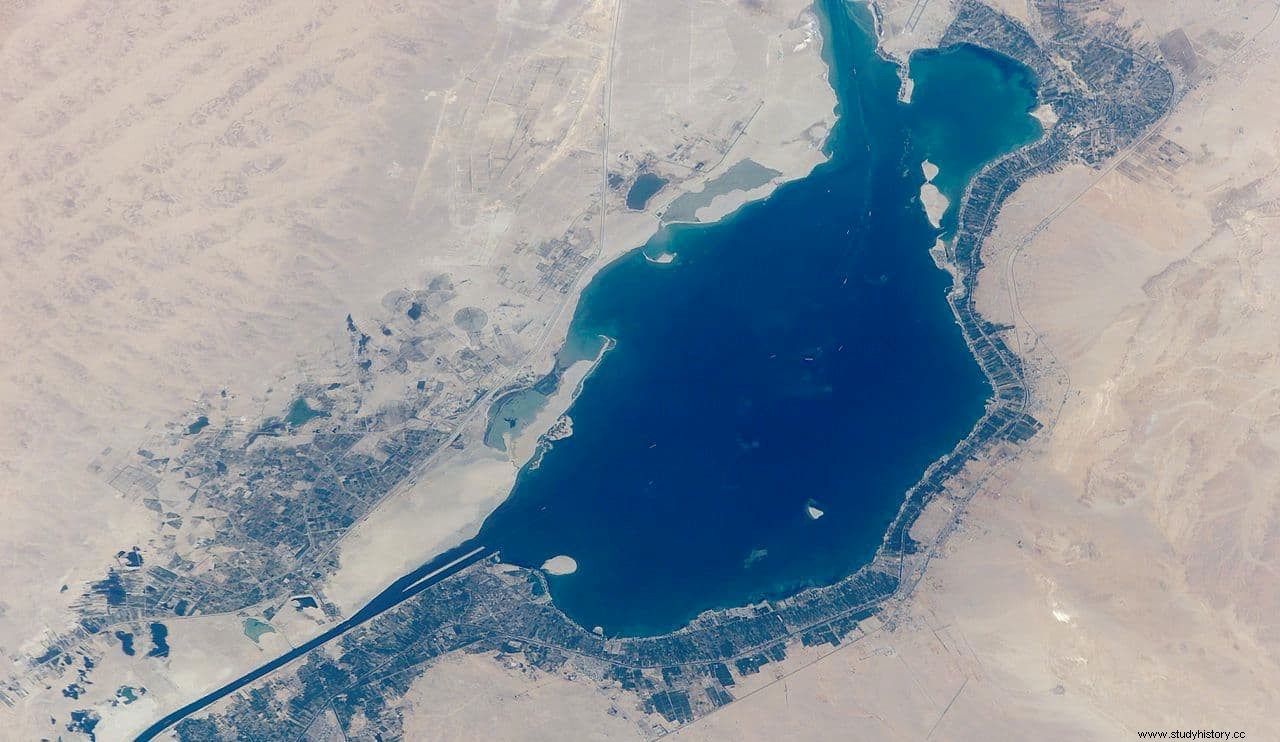
But the Wadi Tumilat was more promising, another boulevard better located geographically as it communicates the Nile delta from Bubastis with the aforementioned Bitter Lakes; its western part corresponds to the biblical Land of Goshen (the area through which the Hebrews left Egypt for the Exodus). That second wadi was the chosen option. Much later, yes, because although opening a canal could be an ambitious but feasible work, we do not find documentary references until the Middle Kingdom, when Pharaoh Sesostris I (the second of the XII dynasty), made the decision. At least, that's how Aristotle tells it in his work Meteorological :
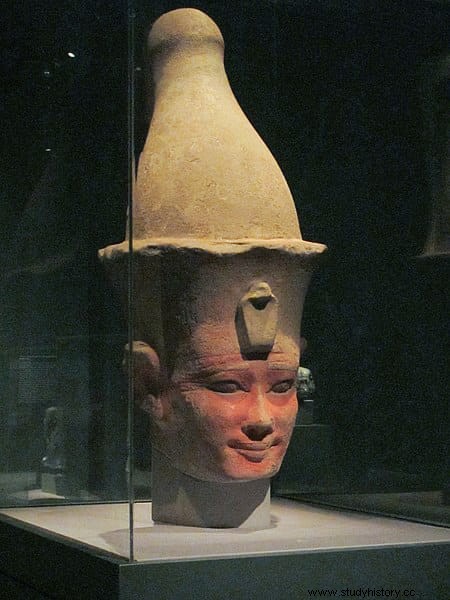
Strabo confirms the data, as does Pliny the Elder , which in the Natural history of him affects the Persian monarch; then we'll see. For now, it should be added that Sesostris I also built a series of fortifications in the region with the mission of protecting the canal. The so-called Path of Horus was also located there, the route that linked Egypt with the Middle East, running between the current Suez and Gaza; it was so valuable, strategically speaking, that during the New Kingdom the defenses initiated by Sesostris were strengthened and expanded with eleven strong fortresses and two cities, Pi-Ramesses (present-day Qantir) and Pi-Atum (Tell el-Masjuta).
For now let's continue in the pharaonic era, although a few centuries later because, after a series of abandonments and recoveries, the man who was going to give it the first big boost came to power. It could not be other than the most megalomaniac pharaoh in the history of Egypt:Ramses II, who filled the country with architectural works to his greater glory and when he did not do them he usurped those of his predecessors by putting his name. It was he who erected Pi-Ramesses, obviously designating it as his capital and settling there. It was an inevitable consequence that he also wanted to promote its economic development and for this it was convenient that maritime traffic could reach there, since it was not on the coast.
This is how another hundred kilometers of Wadi Tumilat were excavated, connecting Bubastis, Pi-Atum and Pi-Ramesses to end up twenty kilometers from Lake Timsah. The channel was supposed to flow into it, but Ramses's engineers realized that they had made a fatal error in their measurements:the one that Aristotle cites about the difference in altitude between the Mediterranean and the Red Sea; Napoleon's French engineers, as we saw, also fell for it. In both cases the result was the same:the abandonment of the works.
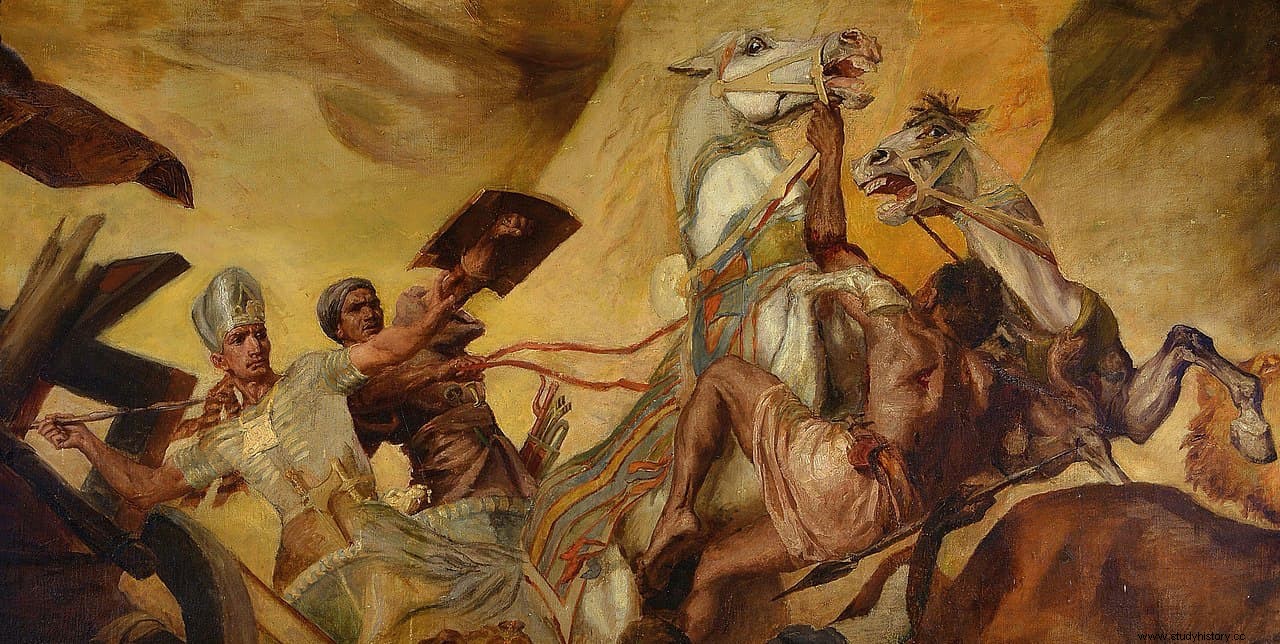
Now, it was too juicy a project to be forgotten, so, although six and a half centuries passed, Pharaoh Necao II, of the 26th dynasty (in the Saite period), recovered it and this time gave it a much bigger boost. decided that earlier. Necao II did not have easy times and had to bravely resist Babylonian expansionism, which he managed to stop in the Syrian-Palestinian strip by seizing the Phoenician provinces of the Neo-Assyrian Empire; Apparently, it was during that campaign that he decided to continue the construction of the canal.
The infrastructure built on that of Ramses II and extended beyond. He was to start at Lake Timsah, a fault basin filled with salt water that reaches about 86 square kilometers in area, although it barely covers a meter and is swampy. From there it would reach the aforementioned Bitter Lakes which, by the way, today are connected to the previous one as part of the Suez Canal, which indicates that Neco had a good eye. In fact, the pharaoh's plan was more ambitious and constituted a true precedent for Lesseps's work.
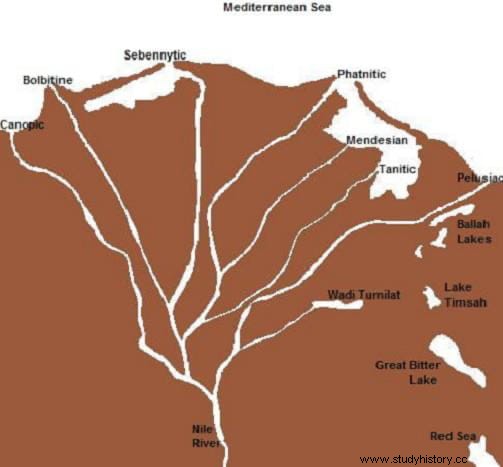
And it is that he intended to unite the surroundings of the coastal city of Pelusio, in the Nile delta -specifically from one of the multiple fluvial arms in which the river branched before emptying into the Mediterranean- with the Red Sea, just as the Suez Canal today. One of the terminal branches of this is found in what is now Ismailía, fifteen kilometers from which Necao, like Ramses, founded a city. It was the aforementioned Pi-Atum (also known by its Greek and Hebrew names:Heroónpolis and Pitón respectively).
So convinced was he of his success that he even formed a fleet, something unusual at that stage of Antiquity because the scarcity of wood in the country -remember that it had to be imported from Byblos- meant that the Egyptians were never a maritime power. Necho resorted to Ionian sailors (Greeks from Asia Minor), who not only constituted the best of the crews together with hired Phoenicians but also built for him the best ships of the time, the triremes. Thanks to this, Egypt took a leap forward and began to navigate the eastern Mediterranean and the Red Sea with greater ambition and, if we believe Herodotus, they even circumnavigated Africa to the west.
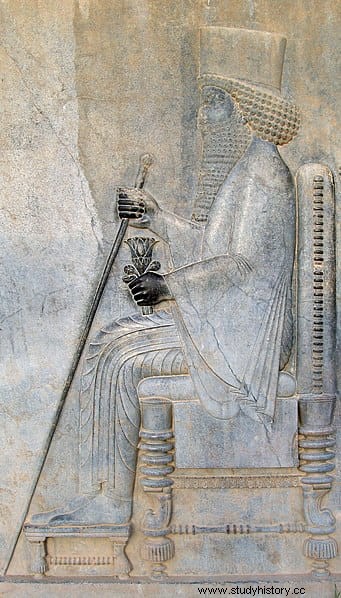
The problem was that Necao did not finish the channel. An oracle predicted that if he did so he would be facilitating an invasion for his enemies, so he heeded her and stopped the work. Neither Psammetichus II, his son and his successor, nor the following kings took them back, which did not prevent the feared arrival of invaders just one hundred years later. They were the Persians of Darius I, who was nicknamed the same as Ramses II:the Great . It was he who completed the infrastructure around 500 BC, extending it to Suez and making it 45 meters wide, with a towpath to tow them from land.
Diodorus Siculus tells that two boats could fit at the same time, with a draft of a couple of meters. Also that the inauguration was made before Darius in person, with twenty-four triremes that marched to Persia loaded with treasures looted from the Egyptians. Thus, he moved the axis of the Persian economy from Mesopotamia to Egypt, thanks to the opening of a sea route through the Indian Ocean. The Roman author follows Herodotus, although he differs from him in the ending because he does not mention that he finished the work, nor do Aristotle, Strabo or Pliny the Elder consider him credible. . The latter reports that Ptolemy II Philadelphus (the son of the diadochus who founded the dynasty) took over the works:
However, Pliny says that he also gave up when he ran into the same technical difficulties of yesteryear, those derived from the difference in level, despite the fact that Diodorus expresses the opposite:the Ptolemaic engineers devised a system of locks between 274 B.C. and 273 a. C. to ensure that no salt water entered the Nile, so that the infrastructure could be considered finished. It remained in operation, he adds, until the Roman conquest. Then it was blinded due to lack of maintenance and it would be Trajan, in the 2nd century AD, who ordered to clean it, hence it was baptized with names such as Río de Trajano or Augustus amnis , according to the scholar Claudius Ptolemy.
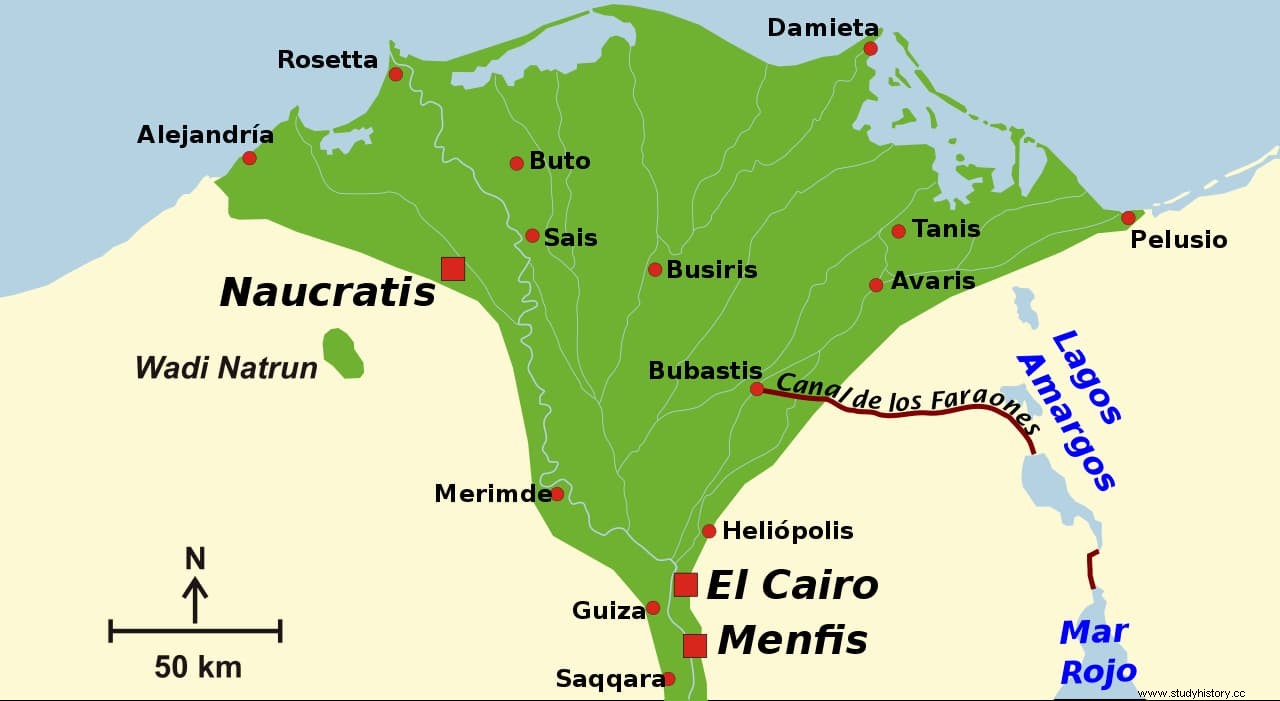
The fact is that this new stage did not last long and at the end of the following century the canal was obstructed again, remaining that way for more than three hundred years. In AD 641, Egypt having recently fallen to Caliph Omar (Abu Bakr's successor), it was again cleared of silt. It therefore resumed its activity and maintained it until 767 AD, when Al-Mansur, the second Abbasid caliph, closed it again to prevent the shipment of food and supplies to Mecca and Medina, which had rebelled.
It was the definitive one and that changed the economic panorama once again because the land caravan routes were benefited. The Venetians still planned to rehabilitate it in the 15th century to extend their commercial operations to the East without having to bypass Africa, just as the French also thought in the 17th century and tried, already with Napoleon, in the 18th century. But, as we saw, it did not go well and we had to wait to see that old dream come true until the opening of the Suez Canal.
